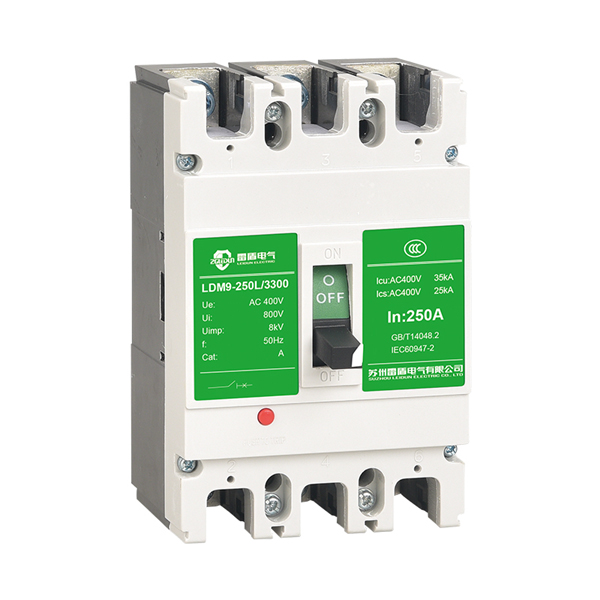Product Standards:
This circuit breaker product implements the following standards:
◆ General rules of IEC60947-1 and GB/T14048.1
◆ IEC60947-2 and GB/T14048.2 Low voltage circuit breaker
◆ IEC60947-4 and GB/T14048.4 Contactors and motor starters
◆ IEC60947-5.1 and GB/T14048.5 Electromechanical control circuit appliances
Normal Working Conditions
◆Ambient medium temperature: not higher than +40℃ (+45℃ for common products) and not lower than -5℃. The average value of 24h does not exceed +35℃ (+40℃ for common products )
◆ Installation location: The altitude does not exceed 2000m;
◆ Installation location: The relative humidity of the air does not exceed 50% when the highest temperature is +40℃. It can have a higher relative humidity at a lower temperature. For example, relative humidity 90% at 20℃. Special measures should be taken for suspected exposure occasionally due to temperature changes.
◆ Installation category:
Main circuit of the circuit breaker and the undervoltage release: Grade III
Auxiliary circuits and control circuits: Grade II
◆ The circuit breaker can withstand the influence of humid air, salt mist, oil mist, mold and nuclear radiation.
◆ The maximum inclination of the circuit breaker installation is ±22.5°
◆ The circuit breaker can work reliably under earthquake conditions (4g);
◆ The circuit breaker should be installed in a place where there is no danger of explosion, no conductive dust, no corrosion of metal and no damage to insulation.
◆The circuit breaker should be installed in a place where there is no rain or snow.
Classification of Circuit Breaker
• Type A: The N pole is not equipped with an overcurrent release ( Shunt Trip ). The N pole is always on, and it is not switched on/off together with the other three poles.
• Type B: The N pole is not equipped with an overcurrent release ( Shunt Trip ) and is switched on/off together with other three poles (N pole is closed first and then opened).
• Type C: The N pole is installed with an overcurrent release ( Shunt Trip ) , and is switched on/off together with the other three poles (the N pole is off first and then on).
• Type D: N pole is installed with an overcurrent release ( Shunt Trip ) . The N pole is always on, and it is not switched on/off together with other three poles.
Rated current (A) :
• LDM9-63: (6A), 10A, 16A, 20A, 25A, 32A, 40A, 50A, 63A (6A without overload protection)
• LDM9-125: (10A), 16A, 20A, 25A, 32A, 40A, 50A, 63A, 80A, 100A, 125A
• LDM9-250: 100A, 125A, 140A, 160A, 180A, 200A, 225A, 250A
• LDM9-40 : 225A, 250A, 315A, 350A, 400A
• LDW9-630: 400A, 500A, 630A
• LDM9-800: 630A, 700A, 800A
[specification With ( ) is not recommended ]
Four Types of Wiring Method:
(1)Front-panel Wiring
(2)Back-panel Wiring
(3)Front-panel-inserted
(4)Back-panel-inserted
Two Types of Overcurrent Release (Shunt Trip):
(1)Thermal-electromagnetic (duplex) type
(2)Electromagnetic (instantaneous) type
Accessories of MCCB Molded Case Circuit Breaker : (1) with accessories and (2) without accessories.
There are internal accessories and external accessories.
Internal accessories include shunt trip, undervoltage release, auxiliary contact, and alarm .
External accessories include rotating handle operating mechanism, electric operating mechanism, interlocking structure, and wiring terminal blocks for auxiliary devices.
| Series LDM9(CM1) MCCB Molded Case Circuit Breaker | ||||
| Image | Model No. | Poles | Unit | Quantity/Carton |
 |
LDM9-63/3300 | 3P | PC | 16 |
| LDM9-125/3300 | 3P | PC | 16 | |
| LDM9-250/3300 | 3P | PC | 12 | |
| LDM9-250/3300 | 3P | PC | 12 | |
| LDM9-400/3300 | 3P | PC | 4 | |
| LDM9-630/3300 | 3P | PC | 2 | |
| LDM9-800/3300 | 3P | PC | 2 | |
| LDM9-1250/3300 | 3P | PC | 1 | |
 |
LDM9-63/4300 | 4P | PC | 16 |
| LDM9-125/4300 | 4P | PC | 16 | |
| LDM9-250/4300 | 4P | PC | 12 | |
| LDM9-400/4300 | 4P | PC | 4 | |
| LDM9-630/4300 | 4P | PC | 2 | |
| LDM9-800/4300 | 4P | PC | 2 | |
| LDM9-1250/4300 | 4P | PC | 1 | |
| Products can be customized to suit your needs. | ||||


Leave a Reply